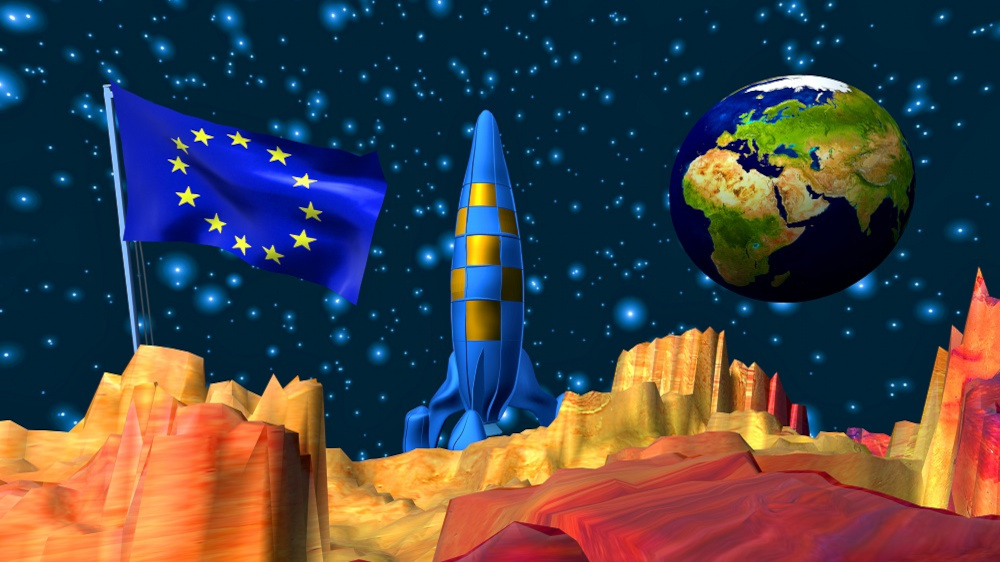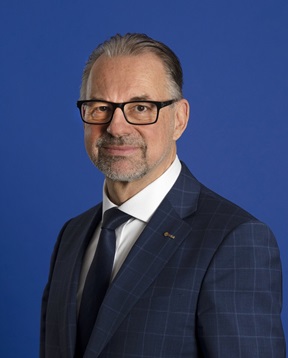
Avaruus – Euroopan strateginen etu epävarmassa maailmassa
Vuonna 2025 maailma on geopoliittisessa murroksessa, ja Eurooppa kohtaa kasvavia haasteita puolustuksessa, teknologiassa ja toimitusketjujen vakaudessa. Marraskuussa kokoontuva ESAn ministerineuvosto CM25 tarjoaa mahdollisuuden vahvistaa Euroopan resilienssiä ja strategista autonomiaa. Avaruus on alue, jossa Euroopalla on yhä globaalia johtajuutta – ja ESAn kautta voimme toimia nopeasti, tehokkaasti ja kunnianhimoisesti.
Kirjoittaja: Josef Aschbacher, Euroopan avaruusjärjestön (ESA) pääjohtaja
In all this uncertainty, Europe's best chance is throug space
OpEd by ESA Director General Josef Aschbacher
In 2025, we are witnessing a world where traditional diplomacy and collaborative norms are increasingly disrupted by power politics, economic uncertainty and strategic competition. This November, the European Space Agency (ESA) will host its Ministerial Council (CM25) to determine funding priorities for the coming years and across Europe we must confront a hard truth: we are unprepared for this new reality. Vulnerabilities are mounting—in defence, trade, energy, AI and quantum technologies, and supply chain stability. Yet in one domain, Europe holds a distinct advantage: space. In space, Europe still has world-leading programmes. And through ESA, Europe can act swiftly and decisively to build its resilience.
Space is not a playground for billionaires. It is essential and woven into the fabric of our daily lives. From weather forecasting—where about 80% of data comes from satellites—to precision agriculture, Galileo navigation, SATCOM-enabled payments, Copernicus air quality monitoring, and missile tracking in Ukraine—space technology powers our economy, protects our environment, and secures our borders. Despite this, while global powers like the US, China, and India surge ahead—not due to superior talent, but bold investment—Europe underinvests in space.
One urgent area where Europe can pool its needs and play to its strengths is in defence, where, like space, Europe remains dangerously underfunded. Defence and space are already complementary, one could even say interdependent—satellites and their data must be kept secure in space, and satellites and their data can help with security on the ground. As China expands its space dominance with a 2,800-satellite intelligence network and the US advances its Starshield programme for real-time Earth surveillance, countries like Russia, India, and Japan are also ramping up investments in space for defence purposes. While defence accounts for half of all public space spending globally, in Europe that figure is just 15%, raising urgent questions about the region’s strategic priorities and attitude to security. As the leader of a civilian space agency, I see how within ESA's remit we can use our best talent and skill to help Europe in this volatile time.
A promising path, and something that will be proposed at CM25, lies in dual-use space systems that serve both civilian and defence needs. By streamlining budgets on a European level, ESA can offer a fast and cost-effective layer of defence to strengthen resilience, while simultaneously advancing science, environmental monitoring, and economic growth. No new legal or international agreements are needed: ESA already provides the framework, pulling Europe’s best assets together and enabling immediate funding allocation in coordination with Member States and the European Commission.
Beyond defence, consider for a moment why space is worthy of investment. The global space industry expands at an impressive 9-10% annually, outpacing global GDP growth and rivalling the world’s fastest-growing sectors. Fueled by breakthroughs in satellite communications, navigation, Earth observation, and other space-based technologies, the space sector is set to triple in value to €1.8 trillion by 2035. Yet, as the global space economy grows, Europe’s representation within it diminishes, meaning we become a smaller part of a bigger industry: out of €122 billion global public funding in 2024, Europe’s share was just 10%, compared to the US's 60 percent. We risk losing our independence and autonomy in the sector to overseas governments or commercial entities.
History shows that during times of geopolitical tension and economic strain, investing in future technologies leads to growth and resilience. America’s Apollo programme, initiated during the Vietnam war which challenged the US’s global superiority, birthed the world’s largest tech sector. Korea’s recovery from the Asian Financial Crisis was driven by a focus on technology and innovation, helping it to become a global tech leader. Germany responded to the 2008 financial crisis by prioritising advanced manufacturing and green technologies, proving that climate-focused stimulus can deliver both economic and employment benefits. Investing in space is no different—it means shaping the future of nations (and continents).
Europe has the intellectual excellence and ESA the track record—Copernicus, Galileo, Euclid, Juice. But this excellence is at risk. Talent drifts to where the excitement is—and that’s oftentimes found outside Europe because big money leads to big and exciting projects. To retain leadership, Europe must put its money where its ambition is at CM25.
Together, we stand at a crossroads. With rising geopolitical instability and wavering US support, Europe must heed the mounting warning signs as a welcome opportunity to build its strategic autonomy. CM25 is more than just another ministerial—it is a moment for radical decision-making. It marks the start of a marathon of budgetary and political milestones including ESA’s Ministerial Council 2028 and the European Commission’s Multiannual Financial Framework (MFF) 2028-34 which will shape Europe’s long-term space ambitions. CM25 is Europe’s golden opportunity to choose ambition over hesitation, leadership over lagging, and vision over complacency – should we be brave enough to seize it.
Josef Aschbacherin kuva: ESA





